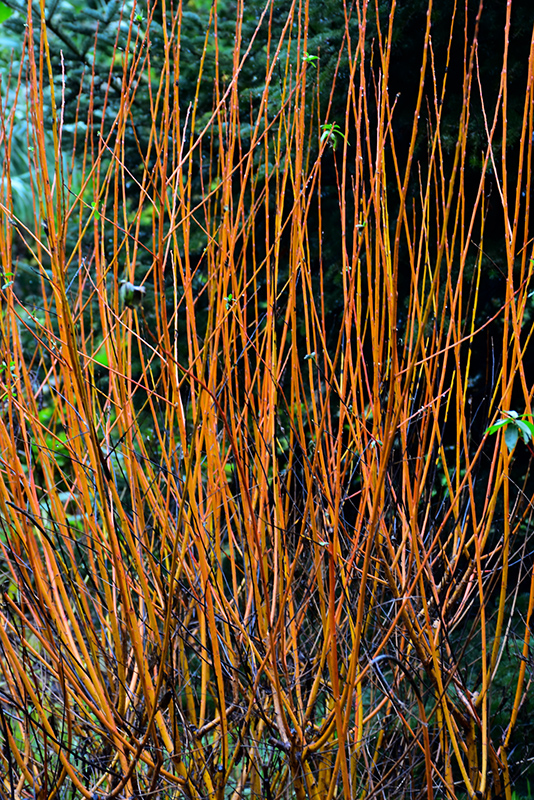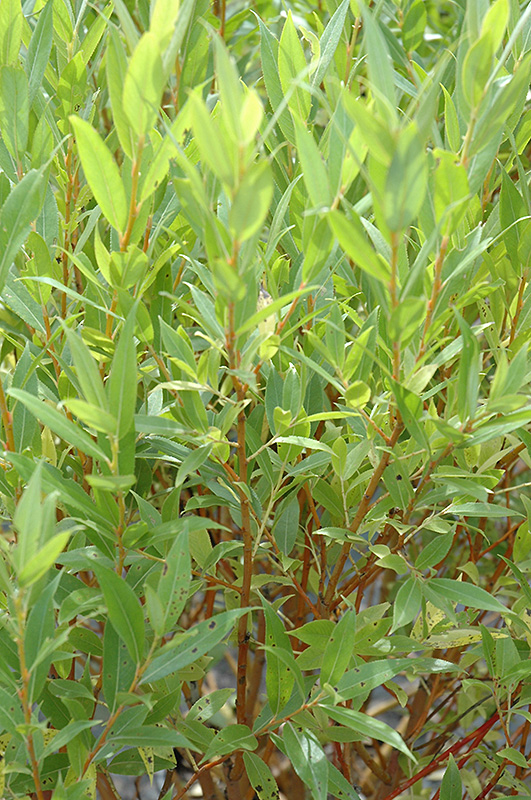Height: 20 feet
Spread: 15 feet
Sunlight:
![]()
Hardiness Zone: 3a
Description:
A hardy, tough and extremely adaptable smaller accent tree featuring flaming orange-red branches that make for a particularly breathtaking relief from the white of winter; compact oval habit, ideal for smaller landscapes; can drop branchlets
Ornamental Features
Flame Willow has forest green deciduous foliage on a tree with an oval habit of growth. The glossy narrow leaves turn gold in fall. The furrowed brown bark and orange branches are extremely showy and add significant winter interest.
Landscape Attributes
Flame Willow is a dense deciduous tree with a shapely oval form. Its relatively fine texture sets it apart from other landscape plants with less refined foliage.
This is a high maintenance tree that will require regular care and upkeep, and is best pruned in late winter once the threat of extreme cold has passed. Gardeners should be aware of the following characteristic(s) that may warrant special consideration;
- Messy
- Invasive
Flame Willow is recommended for the following landscape applications;
- Accent
- Shade
Planting & Growing
Flame Willow will grow to be about 20 feet tall at maturity, with a spread of 15 feet. It has a low canopy with a typical clearance of 4 feet from the ground, and is suitable for planting under power lines. It grows at a fast rate, and under ideal conditions can be expected to live for 40 years or more.
This tree should only be grown in full sunlight. It is an amazingly adaptable plant, tolerating both dry conditions and even some standing water. It is considered to be drought-tolerant, and thus makes an ideal choice for xeriscaping or the moisture-conserving landscape. It is not particular as to soil type or pH. It is highly tolerant of urban pollution and will even thrive in inner city environments. This particular variety is an interspecific hybrid.

